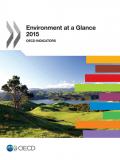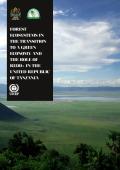
Environment at a Glance 2015 updates key environmental indicators and relevant socio-economic and sectoral indicators to track OECD country progress on major environmental issues and inform policy development and evaluation. This year's edition includes increased coverage of environmentally related taxation, ODA and R&D expenditure.

Mozambique faces a range of environmental challenges and risks, including deforestation; declining fish stocks; land, water and air pollution; and loss and degradation in wetlands and rivers ,which could all be compounded by climate change and a growing population.
The focus of this report is to identify policy options for Green Fiscal Reform (GFR) in Mozambique. These policy options include the use of taxation and pricing measures, which raise revenues or lower expenditures, while furthering environmental goals by addressing environmental externalities and incentivizing green investment.
In addition to these policies, a range of viable GFR policy options that the government could consider were identified through research on the government’s environmental challenges and fiscal policy landscape, a national validation workshop, as well as a literature review and expert consultations on global best practices. These policy options could facilitate Mozambique’s green economy transformation by shifting behaviour and investment decisions, while concurrently helping to create fiscal space that could be used to promote social and green economy investments.

Increasing global demand for food and the need to address climate change risk make it ever more urgent to both protect ecosystems and use land more productively and efficiently. Brazil is a key player in this context and has made significant gains in recent decades. Between 1970 and 2006, its average national cattle farm productivity doubled and its average national crop farm productivity quadrupled. More recently, the country’s conservation efforts have been successful in reducing the rate of Amazon forest clearings to its lowest level in 30 years.
This report shows that not only is there significant further potential for simultaneously promoting economic growth and improving ecosystem protection within Brazil’s rural landscape but also that substantial improvements are already underway. Well-functioning markets and policies can boost the pace at which these changes are happening and help the country to realize latent land use efficiency gains. Such measures provide an opportunity to embed mitigation of climate change risk and increased food production in an overall strategy for developing the Brazilian rural economy.


